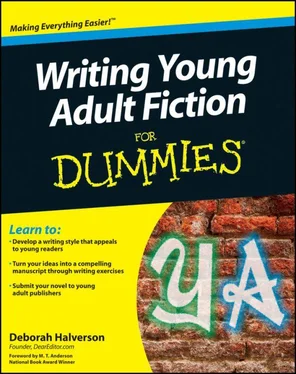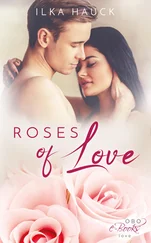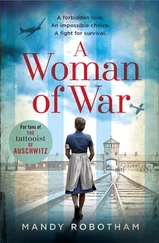 Packagers or book developers:These companies generally come up with the concepts and story ideas before hiring writers to execute those plans, usually for a one-time flat fee. The packager develops the content, takes care of all editing and packaging, and then sells the project to traditional or mass-market publishers, leaving distribution and marketing to that purchasing publisher. The copyright may be joint or in the packager’s name.
Packagers or book developers:These companies generally come up with the concepts and story ideas before hiring writers to execute those plans, usually for a one-time flat fee. The packager develops the content, takes care of all editing and packaging, and then sells the project to traditional or mass-market publishers, leaving distribution and marketing to that purchasing publisher. The copyright may be joint or in the packager’s name.
 Educational publishers:These companies publish curriculum-based material intended primarily for use in schools. They may pay advances against royalties, royalty only, or a flat fee. They usually employ a sales force that markets directly to educators in their schools or at conferences. These books are reviewed in education journals.
Educational publishers:These companies publish curriculum-based material intended primarily for use in schools. They may pay advances against royalties, royalty only, or a flat fee. They usually employ a sales force that markets directly to educators in their schools or at conferences. These books are reviewed in education journals.
 Small presses:These companies may publish just a handful of titles a year. Not all of them publish young adult fiction; they often specialize in one or two book categories. They may offer advances against royalties, royalty-only contracts, or flat fee contracts. Small press books sometimes get dedicated book media reviews. They often market through direct mail catalogs sent directly to potential customers or through wholesalers (also called distributors ), which means they hire independent companies to stock and distribute their books. Because of their small-operation status, they may cease operating suddenly, so there’s higher risk in publishing with a small press.
Small presses:These companies may publish just a handful of titles a year. Not all of them publish young adult fiction; they often specialize in one or two book categories. They may offer advances against royalties, royalty-only contracts, or flat fee contracts. Small press books sometimes get dedicated book media reviews. They often market through direct mail catalogs sent directly to potential customers or through wholesalers (also called distributors ), which means they hire independent companies to stock and distribute their books. Because of their small-operation status, they may cease operating suddenly, so there’s higher risk in publishing with a small press.
 Vanity publishers:Also called co-op publishers or subsidy publishers, these companies handle the production of the book while the author foots the bill. The author also pays for the marketing and promotion (if there is any) and handles the distribution. Vanity publishers offer a percentage (varying from 3 to 40 percent) of each book sold, although sales numbers aren’t usually high, and the publisher owns the ISBN (the 13-digit International Standard Book Number that uniquely identifies your book). The publisher may send out books for review at author expense, but dedicated book media rarely review them.
Vanity publishers:Also called co-op publishers or subsidy publishers, these companies handle the production of the book while the author foots the bill. The author also pays for the marketing and promotion (if there is any) and handles the distribution. Vanity publishers offer a percentage (varying from 3 to 40 percent) of each book sold, although sales numbers aren’t usually high, and the publisher owns the ISBN (the 13-digit International Standard Book Number that uniquely identifies your book). The publisher may send out books for review at author expense, but dedicated book media rarely review them.
The Society of Children’s Books Writers and Illustrators (SCBWI) warns its members to avoid any publisher that requires authors to pay for publication of their work. The distinction between vanity publishing and self-publishing is becoming quite murky as the author-services companies that aid in self-publishing expand their services menu. See Chapter 14 for more on the murkiness.
 Self-publishing:This kind of publishing puts you in the driver’s seat, with all the control as well as all the monetary risk. You design, edit, produce, market, and distribute your own books. You own the copyright and your ISBN, and you keep all the money generated. Self-published books rarely get dedicated book media reviews. They can be sold through online booksellers as well as through personal author websites and at appearances, and they may be sold as e-books or take advantage of print-on-demand technology and so don’t necessarily need to be physically stocked.
Self-publishing:This kind of publishing puts you in the driver’s seat, with all the control as well as all the monetary risk. You design, edit, produce, market, and distribute your own books. You own the copyright and your ISBN, and you keep all the money generated. Self-published books rarely get dedicated book media reviews. They can be sold through online booksellers as well as through personal author websites and at appearances, and they may be sold as e-books or take advantage of print-on-demand technology and so don’t necessarily need to be physically stocked.
Self-publishing favors those who already have a platform and can sell the books as ancillary products, such as through back-of-the-room sales at speaking engagements, or when there are small, identifiable, reachable target audiences. The means for self-publishing are changing as the publishing world evolves to include electronic technologies, and opportunities for individual authors are expanding. I’ve dedicated Chapter 14 to self-publishing.
Enjoying the Perks of Writing for Young Adults
You may have challenges that writers for adult fiction don’t have, but you also have something special going for you: your audience. Young adults are a devoted readership that’s vocal about their passions — and their defiance. Their loyalties and rebelliousness create opportunities for you.
Getting new waves of readers: Long live the renewable audience!
Because new readers age into the young adult market each year, the audience for your fiction is a constantly renewing one. This is a boon for you. For each set of newcomers, the old is new. First time love is as exciting and confusing for the new batch of readers as it was for their older siblings. I talk about picking universal themes that you know will resonate with your targeted age group in Chapter 2. Your task is to come at your theme in a way that makes it fresh and relevant to those new teens on the block.
Gaining a following: The young and the quenchless
When young people like a book, they can be passionate, vocal fans. They tell their friends about it, and then their friends read it and tell their friends about it, and then you have more fans. And with social media, telling one friend can mean telling dozens at the same time. Don’t discount the role of peer pressure in teen book-selecting. No young person wants to be the last to read the latest hot pick, so word of mouth is a big deal with this audience. Just as booksellers hand-sell in bookstores by recommending their favorite titles and authors to customers, so, too, kids push their picks. Get them liking, and get them talking.
You also find that teen readers stick with an author or series with fierce loyalty. They line up outside stores to buy an author’s hot books, and teens even create their own book trailers (see Chapter 15). If you can hook ’em, you own ’em. Teens want more . And because adults are now sticking with young adult fiction even when they grow out of the official age ranges, you may keep your readers longer than you think.
Breaking the rules
A great part of writing for teens is that they’re open to new ways of telling stories. They don’t yet know all the “rules” adults follow — not that they’d care about them if they did know. Young adults like to test boundaries. In content, teens like to flirt with danger while secure in the belief of their immortality and safety. And in seeing rebellion and rule-breaking in stories, teens feel empowered and thrilled and validated.
In terms of writing style, teens are quite open to different. They haven’t become wedded to the old ways, so young readers are more likely to embrace new stuff. They let a story talk about itself, for example, jumping out of the narrative to address readers. They’re also willing to walk the line between fantasy and real. And still being so close to their picture book days and thus very visual, they welcome the inclusion of visual elements when that suits the story.
An example of middle grade fiction that breaks the mold is Brian Selnick’s The Invention of Hugo Cabret , a 526-page book that blends words and pictures in a novel that had expert librarians scratching their heads while they decided what it was. A picture book? A graphic novel? A full-fledged narrative novel? They decided picture book, awarding it the 2008 Caldecott Medal for Illustrations (of which it has nearly 300), even as the National Book Award committee called it a finalist in the Young People’s Literature category.
Let this knowledge free you up to explore and experiment with your own fiction, finding the right way to tell your story.
Chapter 2
Targeting Teen Readers
In This Chapter
Читать дальше
Конец ознакомительного отрывка
Купить книгу

 Packagers or book developers:These companies generally come up with the concepts and story ideas before hiring writers to execute those plans, usually for a one-time flat fee. The packager develops the content, takes care of all editing and packaging, and then sells the project to traditional or mass-market publishers, leaving distribution and marketing to that purchasing publisher. The copyright may be joint or in the packager’s name.
Packagers or book developers:These companies generally come up with the concepts and story ideas before hiring writers to execute those plans, usually for a one-time flat fee. The packager develops the content, takes care of all editing and packaging, and then sells the project to traditional or mass-market publishers, leaving distribution and marketing to that purchasing publisher. The copyright may be joint or in the packager’s name.










